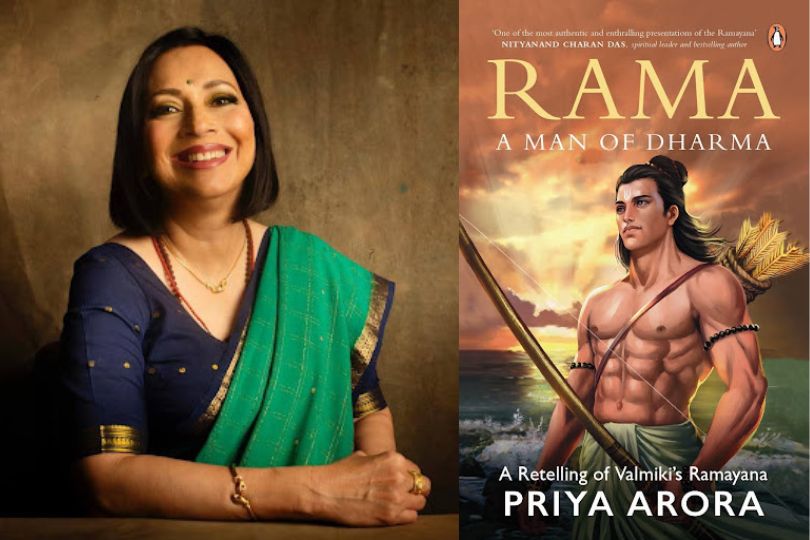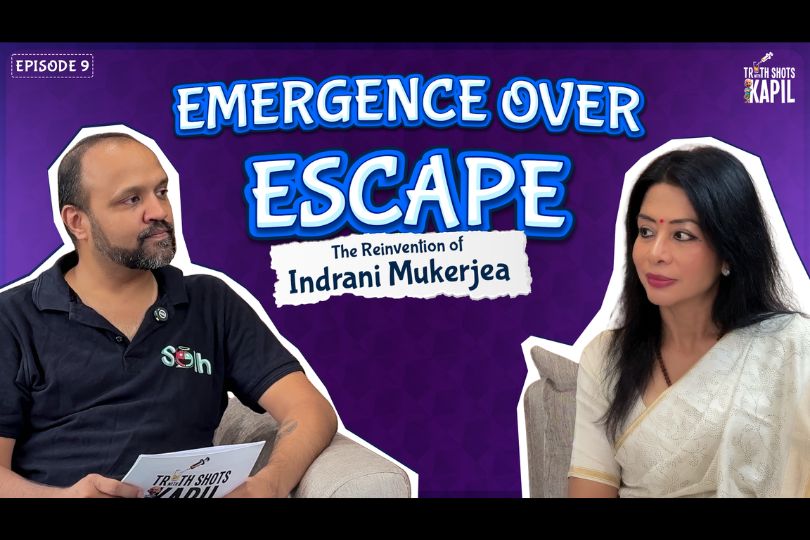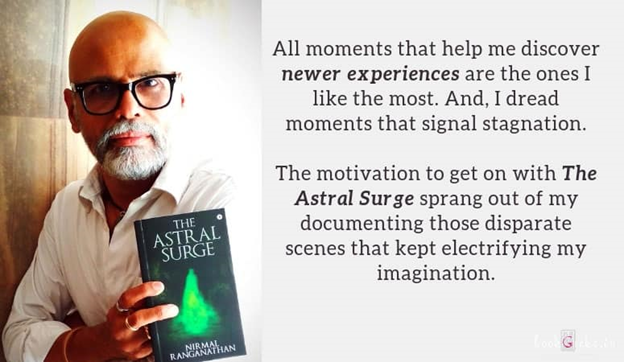Interview with Priya Arora Author of Rama: A Man of Dharma
Priya Arora retells the Ramayana, emphasizing Rama's virtues, dharma, resilience, and their timeless relevance in today's world.on Nov 11, 2024

About the Author
Priya Arora is a spiritual seeker and a devoted follower of Advaita Vedanta. Delving into this ancient civilizational philosophy for many years was an eye-opening experience for her, dispelling many misconceptions. Vedanta's profundity and continuing relevance today inspire her writing.
Priya was born and raised in India and later graduated from Oxford University with a degree in English literature. She lives in the San Francisco Bay Area with her husband, children and beloved French bulldog, Humphrey.
Frontlist: What sparked your motivation to write Rama, A Man of Dharma? Can you walk us through your creative process in adapting the timeless tale of the Ramayana for a contemporary audience?
Priya: I grew up in India, where we celebrate Ram Navami, Dussehra, and Diwali every year. "Ram Ram" is a traditional greeting, and Ramanand Sagar's immensely popular 1980s TV serial on the Ramayana brought life to a standstill when it aired. Suffice it to say, Rama's story is well-known in India. Yet, after studying Valmiki's original text, I discovered I knew very little about the Ramayana! A lot of half-truths and misconceptions were cleared. The truth of the Ramayana impacted me so much that it resulted in my book, Rama: A Man of Dharma.
Today, Rama is seen mainly as a deity revered by Hindus. We remember Rama as Bhagavan but have forgotten the Raja, our ancient ancestor. This is because the actual purpose of the work is lost. In the opening verses, Valmiki states his intention to compose the biography of a righteous man, a contemporary who walked the earth at the same time as him, someone who had the highest principles and never wavered from them, even at great cost to himself.
I approached the book from the perspective of Vedanta because Rama is an exemplar of the eternally applicable dharma espoused by the Upanishads. In my retelling, while staying true to the original composition, I narrated the story in a manner that would appeal to a contemporary audience. Valmiki's masterpiece is fascinating. It has all the elements that hold a reader's interest, whether in content or literary eloquence. I sought to convey the same in English without losing the original flavor.
Frontlist: Rama's approach to hardship is a significant theme in your book. Can you discuss how his story illustrates resilience and hope and how these lessons can be applied in today's challenging world?
Priya: The Ramayana contains many thought-provoking and valuable lessons. Although Rama walked the earth thousands of years ago when customs were different, the human condition remains the same. Struggles and hardships are the inevitable result of birth. One must have steadfastness and mental resilience to navigate life's curve balls.
Rama was plagued with one hardship after another. He was told he would be crowned monarch of the great kingdom of Ayodhya and then banished penniless to the forest the next day! In the thirteenth year of his exile, when it was almost time to return home, his wife, whom he loved more than life itself, was kidnapped. He recovered Sita with great difficulty and lived happily for merely two years before the will of the people forced him to separate from her. Twelve years later, he is reunited with his sons and tries to get the people to reconsider accepting Sita, but she chooses to enter the bowels of the earth.
Frontlist: In your book, how did you approach the characterization of Rama? What personal challenges did you encounter during the writing process, and how did you overcome them?
Priya: I depicted Rama as Valmiki intended. I did not amend anything in his character or present my version. Valmiki created a masterpiece. Who am I to alter it?
The challenge was effectively communicating the dharma behind the controversial episodes in the story. The original audience thousands of years ago understood the nuances of dharma, so explanations were not necessary. However, misconceptions have arisen today because the concept of dharma is not clearly understood. Dharma is contextual, subtle, and not dictated by specific commandments. Based on the situation, a proper understanding of dharma leads to righteous thought and action, not to be confused with prescriptive morality.
To bridge the communication gap between the philosophy behind the Sanskrit work and my English rendition, I used extensive footnotes to explain Vedic concepts. I also added more than 100 pages of Appendices, which cover Vedic concepts and supplemental information so that the story can be read in the proper context.
Frontlist: Having studied English Literature at Oxford, how do you think your academic background shapes your interpretation of ancient texts like the Ramayana?
Priya: Oxford places a premium on critical thinking and analysis, irrespective of the field of study. Instead of being lecture-driven, an Oxford education focuses on small-group tutorials and research. In fact, attending lectures is optional! Learning is through research and analysis instead of reproducing what one reads. A tutor is assigned to a small group of two or three students. After researching a given topic, a student is expected to submit an essay. The tutorials discuss the student's perspective and interpretation from different angles.
Critical thinking is helpful not only in my current role as an author but in all endeavors. However, specific to the Ramayana, I was able to give context and reasoning behind some of the controversial episodes in the epic. Additionally, I was able to view various situations in the Ramayana based on the teachings of the Upanishads that the story dramatizes.
Frontlist: Your journey of learning Sanskrit is inspiring. What motivated you to study this ancient language, and how has it enriched your understanding of Vedic literature?
Priya: Sanskrit is more than just a language. It is inextricable from our heritage. No serious analysis of any Vedic text can be done without a knowledge of Sanskrit. Moreover, Sanskrit is notoriously difficult to translate without degradation of meaning, especially without a deep understanding of Vedic philosophy. Many Sanskrit words have multiple meanings and a text can be easily distorted if inaccurately translated. For example, "Gaū" can mean cow, earth, a ray of light, etc. So, to properly understand these works, I embarked on learning the language of their composition instead of relying on translations.
While English is indeed a powerful language, I am awestruck by Sanskrit's perfect grammar, limitless vocabulary, and enormous depth of expression. All languages seem puny compared to this mother of tongues. It is a tragedy that we Indians are distanced from Sanskrit and don't have fluency in it.
Frontlist: Besides writing, what are your other passions or hobbies that inspire you? How do these activities contribute to your creative process or provide balance in your life?
Priya: Writing is a recent aspect of my life. It is the medium through which I express my passion for our ancient wisdom. My underlying interest is Vedic philosophy, and I spend a significant part of the day studying Sanskrit and our great literary treasures, including the Upanishads, the Bhagavad Gita, and the Puranas. My husband and I own a technology services company, and my day job includes providing management leadership. This keeps me busy as we operate in the USA, Canada, and India, and I actively oversee the firm's financial performance.
I enjoy walks, though I can't say I'm outdoorsy or a hiking-biking kind of person. As a child, I preferred reading in my room to outdoor sports. Today, I find true joy and fulfillment in Vedanta and learning Sanskrit, but I previously enjoyed painting, scrapbooking, and Zumba. Also, I am an animal lover obsessed with my adorable French Bulldog, Humphrey.
Frontlist: Mythology often reflects timeless human experiences. How do you believe Rama's story addresses themes of love, sacrifice, and duty, and why are these themes still relevant today?
Priya: Before answering the question, I would like to correct the term mythology vis-a-vis the Ramayana. The word myth comes from the Sanskrit word mithya, which means false.
The Ramayana and Mahabharata are not mythology. These epics are referred to as itihasa in the Shastras, and for thousands of years, they have been accepted as such. Itihasa means: "It happened thus." Both epics are based on events that took place in ancient times, so they are historical, not mythical. In my book, I have devoted an entire chapter to the historicity of Rama. The rishis used true stories about two great dynasties of the past – the Suryavanshis and the Chandravanshis – to teach dharma via the Ramayana and Mahabharata.
About your question of how Rama's story addresses themes that have continuing relevance today… the Ramayana teaches us many lessons. It speaks of human values that are eternal and universally applicable regardless of race, religion, geography, or era. Let's review some values we cherish and how the Ramayana dramatizes them:
Ahimsa (minimizing violence): Even with armies in full preparedness, Rama sends Angad as an emissary to Ravana on the eve of the battle in a last-ditch attempt to avoid bloodshed. Rama's message was for Ravana to return his wife honorably, and he would leave the kingdom of Lanka. No one needed to die unnecessarily. This is the lesson of sama – dispute resolution through dialogue and diplomacy that continues to be India's stance today. War becomes necessary only when all peaceful attempts to right injustice fail.
Dharma (loosely translated as righteous action): The Ramayana teaches the lesson of personal sacrifice for the public good. Rama chose to accept exile despite pleas from his father, mother, and guru because he did not want the king's word to be proved false. What prominent people do in society, others follow. A leader needs to be a shining example whose word can be trusted. In life, we are often at a crossroads and must choose between what is ultimately beneficial versus what is immediately gratifying. The Ramayana teaches us the timeless lesson of making unselfish choices.
Democracy and good governance: A Vedic king was not a sovereign but an administrator who ruled democratically for the welfare of the people. Chanakya explains the role of the Vedic King: "In the happiness of his subjects lies the king's happiness; in their welfare, his welfare. He shall not consider as good only that which pleases him but treat as beneficial to him whatever pleases his subjects." (Arthashastra 1.19.34).
The Ramayana depicts the importance of the people's will, which is the basis of democracy today. When Dasharatha wants to retire and hand over the reins to Rama, he does not order his coronation. Instead, he calls his Parishad and asks for their approval. He even says that they could suggest an alternative if the people had someone better in mind. Only when they unanimously vote for Rama as their next king does Dasharatha go ahead.
When Bharata comes to Chitrakoota to plead with Rama to return to Ayodhya, Rama gives him a lesson on management and leadership, which is so remarkable that it could be taught in any business school today.
Environmental Protection: The Vedas teach that if we respect nature, nature nourishes us. The Ramayana discusses the need for environmental protection and wildlife conservation, which are front and center in our time. Fresh saplings were planted to replace the loss when trees were cut down to build a road to Chitrakoota. One of the reasons Rama left Chitrakoota was to allow the area to regenerate after Bharata visited with the army that had trampled the place with their presence.
Equality and Fraternity: Rama had the quality of sousheelyam; he treated all individuals without discrimination. He built genuine friendships regardless of social status and was as comfortable associating with the humble Vanaras as with Vibhishana, who was of royal stock. Guha, the Nishada chief, was his dear friend and familiar enough to hug Rama when he saw him.
Gender Equality: When Raja Janka places Sita's hand in Rama's at their marriage, he says she will be his sahadharmachari—partner in dharma. A husband and wife are depicted as equals in their relationship.
Values like liberty, equality, and justice make the Ramayana relevant today and forever.



.jpg)






.jpg)

.jpg)
.jpg)

.jpg)

.jpg)

.jpg)










Sorry! No comment found for this post.